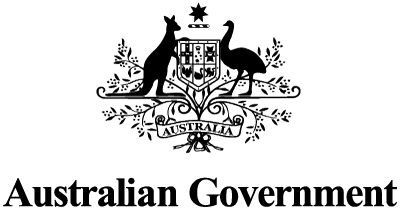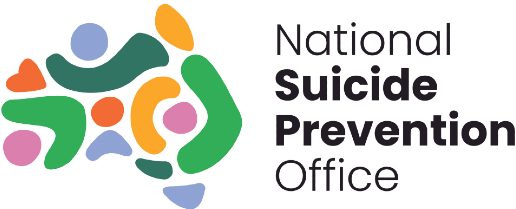0:01
Australia needs a national suicide prevention strategy because we essentially need that road map, I guess that framework for our suicide prevention system and a changed approach to how we look at suicide prevention over the next 10 or so years.
0:17
Where we can truly look upstream at prevention and also in our support services and also about what underpins those things to ensure we have a really well rounded suicide prevention approach across the next 10 years in Australia.
0:32
Australia needs a national suicide strategy for everyone because we were a family that for 10 years plus we're trying to seek support and get help in a system all over Australia actually.
0:45
And it was so disjointed and so hard to navigate and sadly it's worse now than it's ever been.
0:51
So I think Australia collectively, we need to get a strategy that States and all governments can buy into and try and get a continuity of support and care for everyone that needs it.
1:04
Australia needs a national suicide prevention strategy and you know, strategy about suicide prevention.
1:10
As we see the the rates of suicide are increasing, you know, it it it's a significant and really distressing issue that affects everyone.
1:18
And also we know it's one of, if not at times, the leading cause of death.
1:22
Unfortunately for, you know, many people in our communities and you know, beyond that impact, it affects not just the people who attempt to end their lives by suicide or the ones who unfortunately do end their lives by suicide, but also the families and the communities in Australia.
1:37
And you know, collectively the Lift Experience Partnership group has been involved every step of the way in the development of the strategy.
1:46
It was really about a 15 month process of looking at multiple kind of iterations of the draught document and really unpacking what that was, what the actions were, what the objectives were and and how we could really, I guess, embed lived experience at the heart of the strategy along the way.
6:56
If you can fix up or address issues so that people don't go down that path, that's unbelievably important.
7:06
And it's individual, but it's also very common.
7:09
So there are common life stresses that for many can cause then a suicidal distress situation.
7:18
And it's not always about mental illness.
7:20
In fact, it often isn't.
7:22
And reaching a suicidal crisis yourself, and I've been in that position, it's not on your bucket list.
7:30
It's not something that you plan to have.
7:32
But sometimes life throws criticals at people.
7:36
This is to my perspective, not to the perspective obviously of the office or say for example, of my other lived experience partnership group members.
7:45
But I think that there was a recently, you know, the development paper that was put out on the outcomes framework, outcomes map.
7:52
Unfortunately, we need to look past, not saying that we forget or we move past, you know, the people unfortunately that lose their lives to suicide, that end their lives by suicide.
8:02
But suicide cannot just be treated as or be viewed as suicide is when someone has ended their life.
8:08
We know to look at suicide as suicide prevention more broadly.
8:11
We need to like, OK, we know people are ending their lives.
8:14
It's distressing.
8:15
It's sad for those people and their families.
8:17
How do we move on from that and put, you know, the prevention back in suicide prevention?
8:21
I've heard a few people say that.
8:23
But we got to look at things like we've got to look at as much as I'm not a political and economically minded person, you got to look at the economics, you got to look at education, cultural factors.
8:32
You know, suicide prevention can't just exist in health, it can't just exist in mental health.
8:38
You know, we need to be looking at all the other government departments, organisations, you know, someone's interacting with another service organisation.
8:45
Or again, I'll come back to the saying you can't medicate social issues.
8:49
You know, you can't provide therapy for a social issue.
8:51
So we need to address the the drivers of suicide.
8:55
What's different about the strategy it's is the approach of looking upstream.
8:59
So we really are putting prevention back into the suicide prevention area in a really deliberate way.
9:07
So we're, we're looking at what those factors are, what the influences are that may bring people to get into suicidal distress in the 1st place.
9:16
And that's a really key part of the approach.
9:20
The strategy will hopefully give a cohesive and consistent and fairway of moving forward to absolutely reduce the suicide numbers, but also to be able to provide equity and help people who through circumstances beyond their control, whether it's being homeless, whether it's being stuck in trauma, whether it's being in a domestic violence situation or an unemployment crisis.
9:49
The strategy will benefit anyone in those situation if the government's buy in and if the supports are put in place.
9:57
What is the current approach is the question I would pose to, you know, how was this strategy different to what is already?
10:03
Well, The thing is, Australia doesn't have a national suicide prevention strategy, which quite literally seems just so strange to anyone.
10:11
If you say, you know, we see other countries, you know, reference so many other communities and countries in the work of the NSPO and in the development of this strategy is we see lived experience at the core of many things.
10:22
All right, maybe states have their own, you know, with NSW, development of suicide prevention legislation, et cetera.
10:28
But the lived experience is at the core of all of the national suicide prevention strategy.
10:33
And within the office's work.
10:35
I believe the strategy is incredibly comprehensive and I think if ever it's criticised in terms of blue sky thinking, I think that that's exactly where it should be because we have to aim really high.
10:48
And I think everyone recognises that in a utopia, no one would, you know, reach a suicidal crisis and everyone would be able to access everything.
10:57
But this is a strategy that people can look at and know what to aim for and know what has to be put into place.
11:04
So I love the fact that it aims really high and that it really tries to speak to all communities and all people.
11:12
And to me it's for everyone.
11:14
It's not just for a certain part of the population, it's for young people, it's for the elderly, it's for culturally diverse people, It's actually for everyone and I'm really proud of it.
11:24
I think they've done a stunning job.
11:26
It's really important that public consultation gets everyone at every corner and importantly we need people to be visiting the hub, the website, providing their thoughts, the input and their feedback and being honest and critical about what we need.
11:40
Now there's many different ways this is being done, for example through different channels, peak bodies, organisations, but obviously through the National Suicide Prevention's office.
11:48
So really importantly the strategy is out for public consultation and that public consultation.
11:53
Is open until the end of Sunday the 27th of October.

